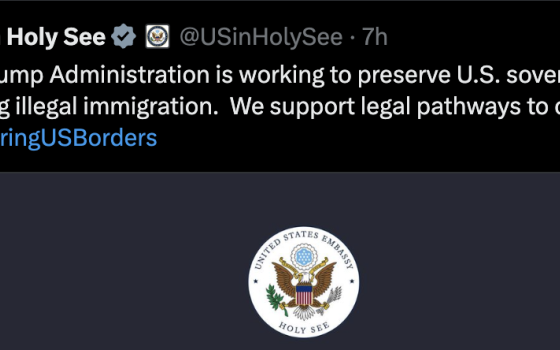By JOHN L. ALLEN JR.
Rome
Though one will find no evidence of it in collections of official papal acts, Pope Benedict XVI received the Dalai Lama on Friday, Oct. 13, his first meeting as pope with the spiritual leader of Tibetan Buddhism, perhaps the only religious leader in the world with an iconic standing approaching that of the Roman Pontiff.
The meeting did not appear in the list of the pope’s appointments on Friday, nor was it mentioned in the news bulletins of the Vatican Information Service or Vatican Radio. No journalists were present, and there were no official photos. When reporters called the vice-director of the Vatican Press Office, Passionist Fr. Ciro Benedettini, they were told that it was a “private meeting.”
Such has been the protocol for meetings between the pope and the Dalai Lama at least since September 1982, when John Paul decided to receive the Tibetan leader in a “private” visit. All told, the Dalai Lama and John Paul met eight times, including the 1986 summit of religious leaders in Assisi called by John Paul to pray for peace, but in general the Vatican has played down the public dimension of these encounters.
A senior Vatican official who has been involved with past visits of the Dalai Lama told NCR that the reason for the low-key treatment was not fear of antagonizing China, despite the fact that establishing diplomatic relations with China is a key priority of the Holy See. Instead, he said, a decision was taken several years ago, under John Paul II, that such visits should be kept “low-profile,” in order to be sure that meetings with the pope did not become artificial exercises in seeking photo opportunities simply to keep the Tibetan cause in the news.
The pope recognizes the Dalai Lama as a spiritual authority, this official said, and is always willing to meet with him, but doesn’t want to confuse that relationship with political causes.
The Dalai Lama’s first meeting with a pope came in September 1973, when he met Pope Paul VI in Rome during the Tibetan leader’s first trip outside Asia.
The Dalai Lama was accompanied on Friday by three assistants, his secretary and his spokesperson, while two officials from the Pontifical Council for Inter-religious Dialogue also took part in the brief meeting with the pope.
The Dalai Lama afterwards told reporters that the two spiritual leaders discussed “human values, religious harmony and the environment,” and found themselves in “substantial agreement.”
Notably, he did not say if the two men had discussed the thorny issue of autonomy for Tibet, occupied by China since 1951. The Dalai Lama led about 80,000 Tibetans into exile in 1959, and heads a government-in-exile in Dharamsala, India. For this reason, the Chinese government frowns upon any official recognition of the Dalai Lama by governments or other hosts.
On the same day that Benedict and the Dalai Lama met, Chinese authorities acknowledged that they had opened fire on a group of Tibetan refugees trying to cross the border with Nepal and that they killed “at least one”.
Despite the near-invisibility of Friday's meeting with Pope Benedict, a Buddhist monk in Lumbini, Nepal, considered the birthplace of Buddha, was quoted by the AsiaNews service as calling it a “historic event.”
“The Pope and Dalai Lama have no big armies, but they are the monarchs of the hearts of millions of people all over the world,” said Bhante Satyabrata. “Their meeting was focused on peace not violence. This event is a living witness that God is not myopic to our requests and actively strives to make love triumph over hatred.”


